In today’s fast-paced world, lunchtime often becomes an afterthought—a rushed sandwich, a fast-food fix, or even skipped entirely. Yet, for those committed to a healthier lifestyle, particularly one grounded in a plant-based approach, lunch offers a critical opportunity to nourish the body, balance blood sugar, and support sustainable weight management. With the rising popularity of plant-based eating, many are seeking not only inspiration for delicious meals but also science-backed strategies that truly promote weight loss without sacrificing satisfaction. In this article, we’ll explore smart, satisfying plant-based lunch ideas for weight loss, all backed by nutritional science and optimized to help you stay energized and full throughout the day.
You may also like: Healthy Plant-Based Dinners Made Easy: Best Whole Food Plant-Based Recipes for Beginners and Beyond
At its core, the concept of a plant-based lunch emphasizes whole, minimally processed ingredients that offer high nutrient density while remaining relatively low in calories. The ideal plant-based lunch doesn’t just avoid animal products—it’s built around vegetables, legumes, whole grains, fruits, nuts, and seeds that fuel the body while aligning with long-term health goals. Whether you’re new to the lifestyle or a seasoned advocate of whole-food eating, incorporating a healthy plant-based lunch into your daily routine can be a game-changer for weight management, metabolic health, and overall vitality.
Let’s take a deep dive into the nutritional science behind this lifestyle and explore practical, delicious ways to build plant-based lunch recipes that not only taste amazing but help support your weight loss journey in a sustainable, evidence-based manner.
Why Lunch Matters: The Role of Midday Meals in Weight Loss
For many, lunch is the anchor of the day—an opportunity to recalibrate energy, reset focus, and refuel for the second half of the day. Yet its role in weight loss is often misunderstood or undervalued. Skipping lunch or relying on nutritionally poor choices can disrupt metabolism, increase afternoon cravings, and lead to overeating later in the day.
A well-structured plant-based diet lunch plays a key role in promoting satiety, stabilizing blood sugar, and reducing the likelihood of snacking on high-calorie, nutrient-poor foods. Research consistently shows that individuals who eat balanced, fiber-rich plant-based meals earlier in the day tend to consume fewer total calories over 24 hours compared to those who delay or skip meals. This supports the idea that thoughtfully composed plant-based lunch ideas can serve as a cornerstone for effective weight loss strategies.
Moreover, eating a healthy plant-based lunch helps maintain a more consistent level of energy throughout the afternoon, which is especially important for people who experience the dreaded “afternoon slump.” Meals centered around legumes, leafy greens, and whole grains are digested more slowly, offering a prolonged source of energy and preventing blood sugar spikes and crashes. This metabolic stability is particularly beneficial for individuals with insulin resistance or those managing type 2 diabetes—conditions often linked with excess weight.
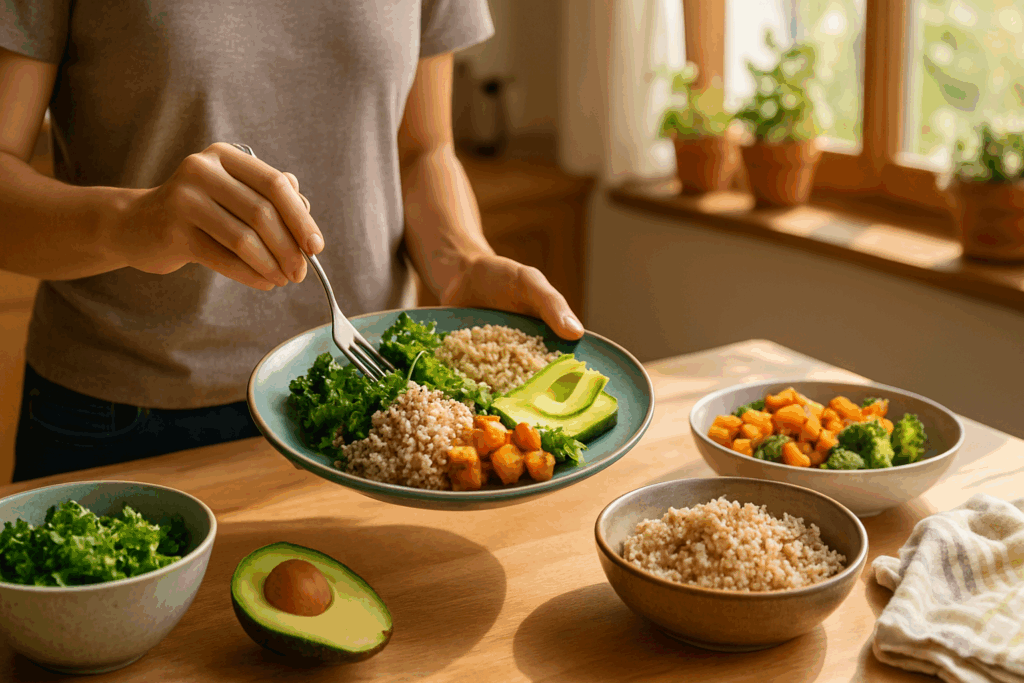
The Science of Satiety: What Makes Plant-Based Lunches So Filling?
When it comes to satiety—the feeling of fullness that prevents overeating—not all calories are created equal. A growing body of research supports the idea that plant-based foods, particularly those high in fiber and water content, have a superior ability to keep hunger at bay. This is one reason why healthy vegan lunch ideas are increasingly recognized as powerful tools for weight loss.
Fiber, found abundantly in beans, lentils, vegetables, and whole grains, plays a central role. Unlike refined carbohydrates that are digested quickly and provide only short-term satiety, fiber slows gastric emptying and extends the release of hunger-regulating hormones such as peptide YY and GLP-1. These hormones signal to the brain that the body is full, reducing the urge to snack between meals.
Furthermore, many plant-based lunch recipes incorporate high-volume, low-calorie foods like leafy greens, zucchini, tomatoes, and mushrooms, which physically fill the stomach without adding excess calories. These foods allow for larger portion sizes that look and feel satisfying, even when calorically modest. The result is a meal that leaves you full, not stuffed—and sets you up for a successful afternoon without the burden of post-meal fatigue.
Including a modest amount of healthy fats—such as avocado, nuts, or tahini—can further enhance satiety and help absorb fat-soluble nutrients like vitamins A, D, E, and K. This balance of fiber, water, and fat content is one reason why plant-based whole food lunch ideas for weight loss are both satisfying and nutritionally complete.

Building the Ideal Plant-Based Diet Lunch: Principles for Weight Loss Success
Constructing a truly effective plant-based lunch for weight loss isn’t just about cutting calories—it’s about optimizing nutritional quality while preserving pleasure and satisfaction. There are a few guiding principles that can help ensure each meal hits the sweet spot between nourishment and enjoyment.
First, focus on diversity. Incorporating a range of textures, flavors, and plant food groups makes a meal more interesting and satisfying. A successful lunch might include a mix of cooked and raw elements, such as roasted sweet potatoes alongside crisp romaine or a grain bowl topped with both warm lentils and cool cucumber. This sensory diversity encourages mindful eating and reduces the urge to overindulge.
Second, emphasize protein-rich plant foods. While vegetables and fruits provide valuable nutrients, legumes such as lentils, chickpeas, black beans, and tofu contribute essential amino acids and increase meal satiety. Including protein in your plant-based lunch ideas is especially important for preserving lean muscle mass during weight loss and supporting metabolic health over the long term.
Third, minimize ultra-processed foods. While technically vegan, many packaged meals and faux meats are high in refined oils, sodium, and additives that can sabotage weight loss efforts. Instead, prioritize whole plant ingredients that require minimal processing. A homemade chickpea salad sandwich made with mashed chickpeas, avocado, and lemon juice on whole grain bread is far superior to a frozen vegan burrito loaded with fillers and preservatives.
Finally, embrace herbs, spices, and acidity. Flavorful plant-based lunch recipes don’t need to rely on excess salt or fat. Fresh herbs, garlic, turmeric, ginger, balsamic vinegar, and lemon juice can elevate the taste profile of any meal, making it more appealing without compromising your health goals.
Plant-Based Lunch Ideas for Weight Loss: Nourishment Meets Convenience
One of the most appealing aspects of adopting plant-based lunch ideas is their inherent flexibility. Whether you’re prepping meals for the week, packing lunch for the office, or throwing together a quick bowl at home, there’s a wide array of nutrient-dense, weight-loss-friendly options to choose from.
A classic example is the grain bowl—a versatile template that can be endlessly customized. Start with a base of quinoa, farro, or brown rice. Add roasted vegetables such as broccoli, carrots, or cauliflower. Top with a source of protein, like baked tofu or seasoned black beans, and finish with a drizzle of tahini dressing or salsa verde. This combination provides the fiber, protein, and micronutrients needed to keep you energized and full without excess calories.
Another go-to option is a hearty salad that goes beyond leafy greens. Think massaged kale with lentils, shredded carrots, red cabbage, sunflower seeds, and a lemon-tahini dressing. Adding roasted sweet potato or a scoop of hummus can transform a basic salad into a deeply satisfying meal. These types of meals embody the essence of plant-based whole food lunch ideas for weight loss: colorful, flavorful, and filling without being heavy.
For those craving comfort food, a warm lentil soup with whole grain toast or a vegetable-stuffed sweet potato offers the perfect balance of satiety and nourishment. These meals are rich in soluble fiber and resistant starches, which support gut health and contribute to a feeling of fullness that lasts for hours.
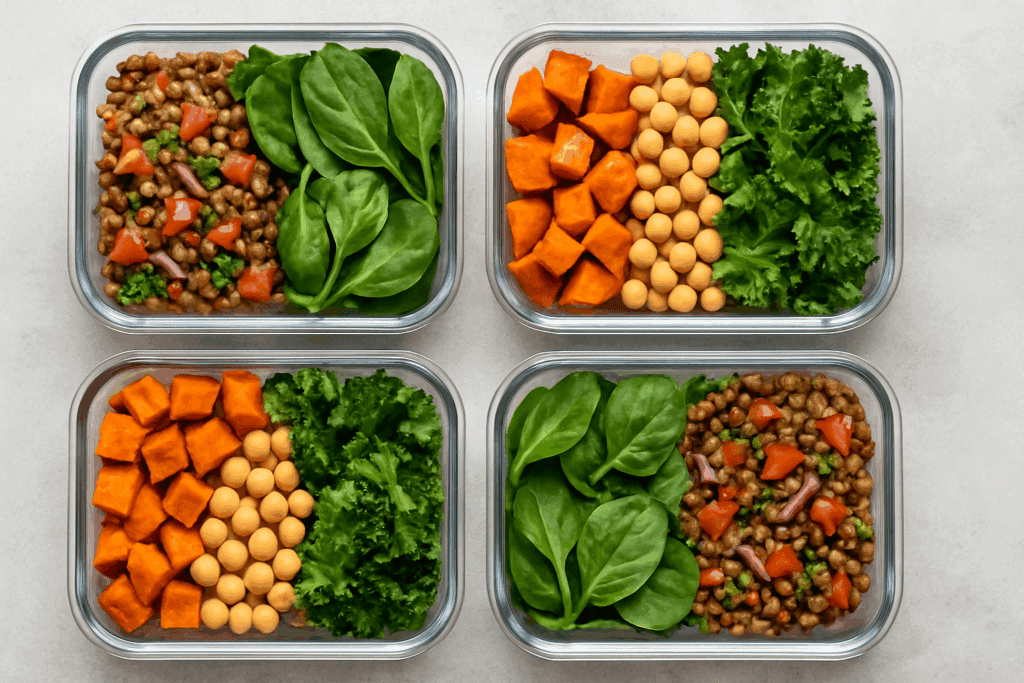
Overcoming Common Challenges with Plant-Based Lunches
While plant-based eating offers numerous benefits, it’s not without its challenges—especially when it comes to maintaining variety and avoiding hidden sources of calories that may undermine weight loss efforts. Many people fall into repetitive patterns, rotating between the same three meals and eventually experiencing taste fatigue. Others unknowingly overdo calorie-dense ingredients like oils, dressings, or vegan cheeses.
To stay on track, consider rotating your ingredients weekly. Use seasonal produce to keep things exciting—fresh heirloom tomatoes in summer, roasted squash in fall, or citrus fruits in winter can inspire new lunch combinations. Additionally, portion control matters, even with plant-based foods. A cup of cooked lentils is more than enough for most lunches, while an entire avocado—though healthy—may push fat and calorie counts higher than needed for weight loss.
Mindful eating practices can also help. Slowing down during lunch, minimizing distractions, and tuning into hunger cues can prevent overeating and improve digestion. These simple behaviors are often overlooked, but they amplify the effectiveness of even the healthiest plant-based lunch recipes by encouraging greater awareness and satisfaction.
The Power of Meal Prep: Planning Ahead for Success
Consistency is key when it comes to weight loss, and meal prepping plant-based lunches in advance can be a powerful tool for staying on track. Preparing ingredients on the weekend or the night before ensures that healthy choices are readily available, even during busy weekdays.
Batch cooking legumes, grains, and roasted vegetables allows for quick assembly of lunches without the need for daily cooking. Many people find success by preparing base ingredients and storing them separately, then mixing and matching components to create different lunches throughout the week. For instance, cooked chickpeas can be used in salads one day, mashed into a wrap the next, and blended into a hummus for veggie dipping later in the week.
Homemade dressings, soups, and grain salads tend to store well and can provide variety without the need for constant kitchen time. With a little foresight, plant-based lunch ideas become less of a chore and more of a dependable foundation for a healthy, balanced lifestyle.
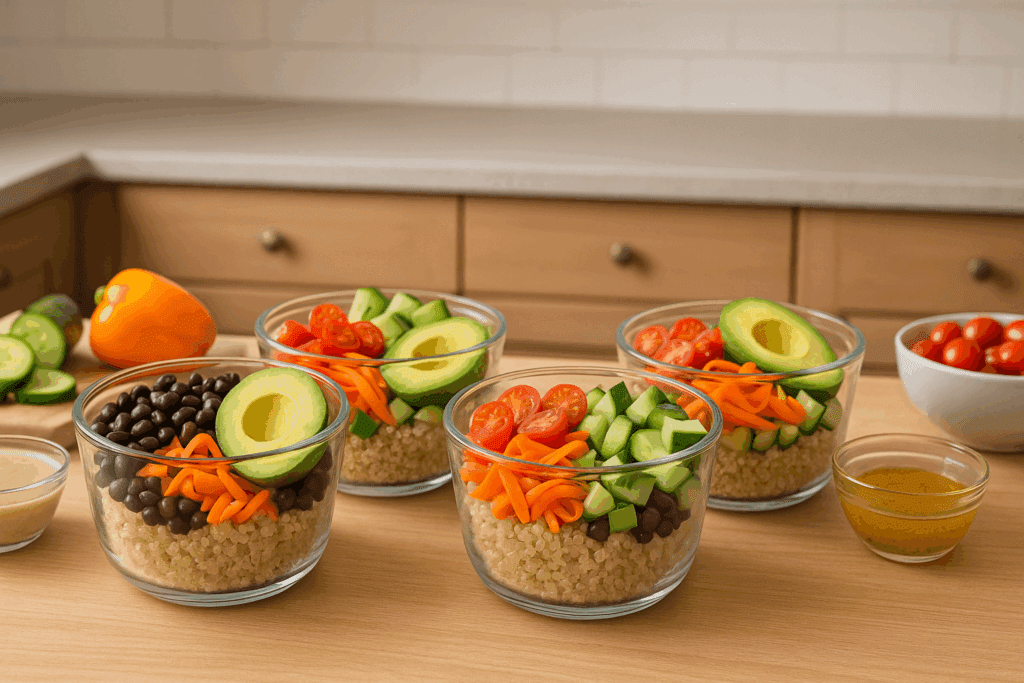
Plant-Based Lunches and Sustainable Weight Loss: What the Research Says
The weight loss benefits of a plant-based diet are increasingly supported by robust scientific evidence. A meta-analysis published in the Journal of General Internal Medicine found that individuals following plant-based diets lost significantly more weight than those following omnivorous diets, even without specific calorie restrictions. One reason is that plant-based diets tend to naturally reduce calorie density while increasing intake of satiating nutrients.
In particular, plant-based lunch ideas contribute significantly to this effect by replacing refined, processed midday meals with high-fiber, nutrient-dense alternatives. Studies show that people who eat fiber-rich lunches experience less hunger and fewer cravings later in the day, leading to reduced total caloric intake. Additionally, plant-based diets have been shown to improve insulin sensitivity, lower inflammation, and reduce visceral fat—each of which supports long-term weight management and metabolic health.
Importantly, the success of these diets isn’t just about losing weight—it’s about maintaining it. Research from the Adventist Health Studies, which followed thousands of participants over decades, found that plant-based eaters had lower BMI levels and were more likely to maintain weight loss over time compared to meat-eaters. This suggests that the habit of eating a healthy plant-based lunch isn’t just a short-term fix, but a sustainable lifestyle strategy.
Bringing Joy to the Table: The Emotional Satisfaction of Plant-Based Eating
Beyond physical fullness, meals should bring emotional satisfaction. Many people associate dieting with restriction and deprivation—but plant-based lunch recipes, when thoughtfully prepared, offer the opposite experience. They are vibrant, flavorful, and deeply nourishing, both physically and emotionally.
Culinary creativity plays a big role. Experimenting with global flavors—like Moroccan spiced lentils, Thai peanut sauce, or Mediterranean hummus bowls—keeps meals exciting and culturally enriching. Sharing these meals with friends or family, even in a packed lunch form, enhances the emotional gratification of the experience and supports a positive relationship with food.
This holistic satisfaction is a key component of sustainable weight loss. When meals are enjoyable, people are more likely to stick with healthy patterns. A plant-based lunch that delights the senses and satisfies the soul sets the tone for a more mindful and empowering relationship with food overall.
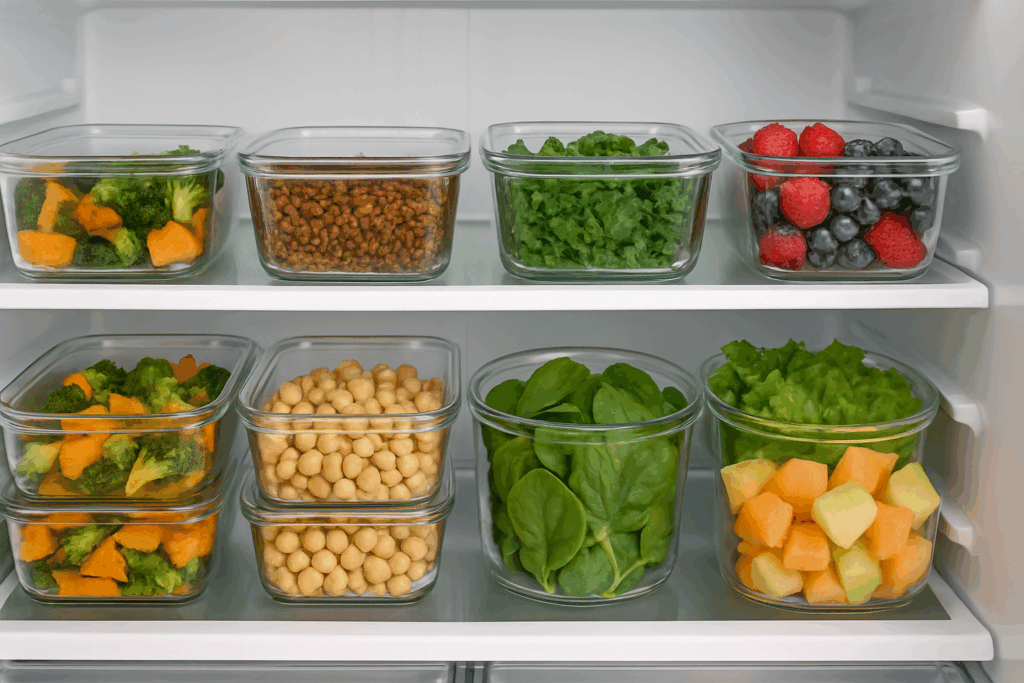
Frequently Asked Questions: Plant-Based Lunch Strategies for Lasting Health and Sustainable Weight Loss
1. How can I structure a plant based lunch to avoid the mid-afternoon energy slump?
A well-structured plant based lunch should include complex carbohydrates, lean plant protein, and a healthy fat source to provide sustained energy. One often-overlooked tip is to emphasize slow-digesting legumes like lentils or black beans paired with intact whole grains such as farro or bulgur. Adding fermented foods like sauerkraut or tempeh not only supports gut health but also enhances nutrient absorption, making your lunch more metabolically effective. A drizzle of tahini or a few slices of avocado can stabilize blood sugar and prevent the crash that often follows a carb-heavy meal. The key is balancing fiber and protein in every plant based diet lunch to maintain satiety and steady glucose levels.
2. What are some plant based whole food lunch ideas for weight loss that travel well for work or school?
If you’re on the go, look for plant based whole food lunch ideas for weight loss that can be prepped in advance without compromising flavor or texture. Mason jar salads layered with quinoa, chickpeas, shredded cabbage, and a lemon-tahini dressing are compact and stay fresh for hours. Wraps made with sprouted grain tortillas and filled with hummus, roasted vegetables, and leafy greens offer both portability and nutritional density. Cold lentil salad with chopped cucumbers and herbs travels well, as does a roasted sweet potato bowl with black beans and lime dressing. Focus on items that can be eaten cold or at room temperature to ensure convenience while maintaining the nutrient-rich intent behind your plant based lunch.
3. How can plant based lunch recipes support hormonal balance, especially for women?
Plant based lunch recipes can play a critical role in supporting hormone health, particularly through the inclusion of phytoestrogens, fiber, and micronutrients like magnesium and zinc. For example, adding ground flaxseed to a lentil bowl or incorporating edamame into a salad provides natural plant compounds that support estrogen regulation. Leafy greens like kale and arugula help with estrogen detoxification in the liver, while legumes assist in managing insulin sensitivity—a key hormone regulator. Many lunch ideas for plant based diet routines also include omega-3-rich seeds like chia and hemp, which have anti-inflammatory benefits tied to hormonal stability. Regularly rotating these ingredients ensures a more balanced hormonal environment, especially during reproductive transitions or menopause.
4. Are there plant based lunch ideas that satisfy cravings for comfort food without derailing weight goals?
Absolutely. One of the most powerful strategies for sustainable weight management is reframing comfort food with nutritious, plant-forward swaps. A chickpea “tuna” sandwich with mashed avocado and capers can mimic traditional deli flavors without excess fat or processed ingredients. Baked tofu with mashed sweet potatoes and steamed greens mimics the warmth of meat-and-potatoes meals but with better nutrient density. When considering plant based lunch ideas, focus on umami-rich ingredients—like miso, mushrooms, and sun-dried tomatoes—which give a satisfying depth of flavor. These comforting elements can be incorporated into hearty soups, grain bowls, or plant based lunch recipes like shepherd’s pie made with lentils and cauliflower mash. This approach balances emotional satisfaction with metabolic support.
5. How can I stay creative and avoid boredom with daily lunch ideas for plant based diet plans?
The secret to keeping a plant based diet lunch exciting lies in global inspiration and weekly ingredient rotation. Try Moroccan-spiced chickpeas with couscous one day, followed by a Vietnamese rice noodle salad with herbs the next. Utilize different sauces—such as peanut-ginger, chimichurri, or tahini-lime—to transform the same base ingredients into entirely new meals. Consider themed lunch weeks, like Mediterranean or Indian-inspired dishes, to challenge your palate and incorporate new spices and textures. Rotating ingredients and experimenting with plant based lunch recipes from various cuisines can reinvigorate your routine and support long-term adherence.
6. What role does meal timing play in optimizing the effects of a plant based lunch for weight loss?
Meal timing can amplify or diminish the benefits of your plant based lunch. Eating lunch between 11 a.m. and 1 p.m.—aligned with your body’s natural circadian rhythm—can support better insulin sensitivity and metabolic function. Avoid skipping lunch or delaying it too far into the afternoon, as this can lead to overeating later in the day and disrupt hormonal balance. Some research suggests that consuming your largest meal earlier in the day can improve satiety and reduce overall calorie intake. If you’re focusing on plant based whole food lunch ideas for weight loss, pairing your meal with a brisk walk afterwards may also support glucose regulation and digestion. Timing, in this context, enhances both nutrient assimilation and appetite control.
7. How do plant based lunch ideas differ for those with high physical activity levels?
Active individuals may need to modify plant based lunch recipes to meet higher energy and protein requirements. This could involve adding higher portions of legumes, quinoa, tempeh, or tofu, as well as incorporating denser fats from avocado, nuts, or olive oil. Smoothies are a creative lunch option for plant-based athletes—especially when packed with greens, berries, plant protein powder, and flaxseeds. To replenish glycogen stores, include starchy vegetables like sweet potatoes or whole grains such as barley. These lunch ideas for plant based diet lifestyles can help support muscle recovery, reduce inflammation, and meet caloric needs without compromising nutritional integrity.
8. What overlooked ingredients can enhance the nutrition of a healthy vegan lunch idea?
Incorporating microgreens, fermented vegetables, and sea vegetables like nori or dulse can significantly upgrade any healthy vegan lunch idea. Microgreens are rich in concentrated vitamins, while fermented foods provide beneficial probiotics that support digestion and immune health. Nori adds iodine, an essential mineral often under-consumed in vegan diets. Additionally, nutritional yeast can be sprinkled on bowls or salads to add a cheesy flavor and a reliable source of B12. These small additions are especially helpful in enhancing both the taste and micronutrient density of any plant based lunch without adding excessive calories.
9. How can I meal prep multiple plant based lunch recipes efficiently without spending hours in the kitchen?
Efficiency in meal prepping comes down to strategic batch cooking and modular components. Cook large quantities of grains, beans, and roasted vegetables at the beginning of the week and store them separately. With these components, you can assemble various plant based lunch ideas in minutes by adding different sauces, spices, or greens. For instance, quinoa can become a base for a Buddha bowl one day and a stuffing for bell peppers the next. Rotating these elements prevents repetition while staying aligned with your plant based whole food lunch ideas for weight loss. Freezing some pre-portioned meals is another time-saving trick that supports variety without daily prep.
10. How might plant based lunch habits impact long-term metabolic health and chronic disease prevention?
Consistently choosing a nutrient-rich plant based lunch may have long-term benefits for metabolic health, including better insulin regulation, improved lipid profiles, and reduced systemic inflammation. Whole plant foods are rich in antioxidants and fiber, which are linked to lower risks of type 2 diabetes, cardiovascular disease, and certain cancers. Emerging research suggests that regular intake of polyphenols from colorful vegetables and legumes can positively modulate the gut microbiome, which plays a crucial role in metabolic function and immune regulation. When planned intentionally, lunch ideas for plant based diet plans can support not just weight loss, but also long-term vitality and disease prevention. Making these meals a consistent part of your lifestyle builds a foundation for lasting health transformation.
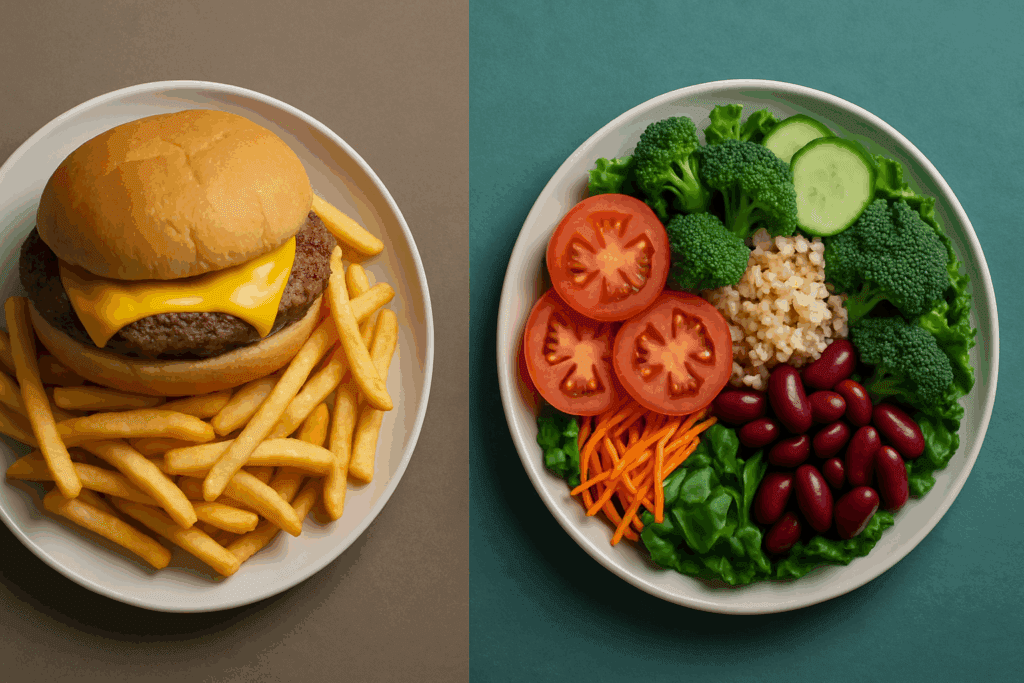
The Takeaway: How to Make Every Plant-Based Lunch Count for Weight Loss
A successful approach to plant-based lunch for weight loss hinges on nutrient density, satiety, variety, and joy. Rather than relying on restriction or deprivation, the most effective plant-based diet lunch strategies emphasize abundance—abundance of fiber, color, texture, and flavor. These meals support healthy digestion, stabilize energy levels, and naturally reduce the urge to overeat.
Whether you’re crafting a lentil stew, a roasted veggie bowl, or a fresh kale salad with beans and avocado, the goal remains the same: to nourish your body in a way that is both satisfying and aligned with your long-term health goals. Smart planning, diverse ingredients, and mindful eating all contribute to making plant-based lunch ideas not just a daily habit, but a transformative health practice.
The growing body of nutritional science affirms what many plant-based eaters already know from experience: healthy vegan lunch ideas can be the most delicious and effective strategy for achieving sustainable weight loss. By embracing whole foods and aligning with the natural rhythms of your body, every lunch becomes an opportunity to move closer to your goals—one satisfying bite at a time.
Further Reading:
17 Healthy Lunch Ideas for Weight Loss
7-Day Plant-Based Diet Meal Plan for Beginners, Created by a Dietitian

